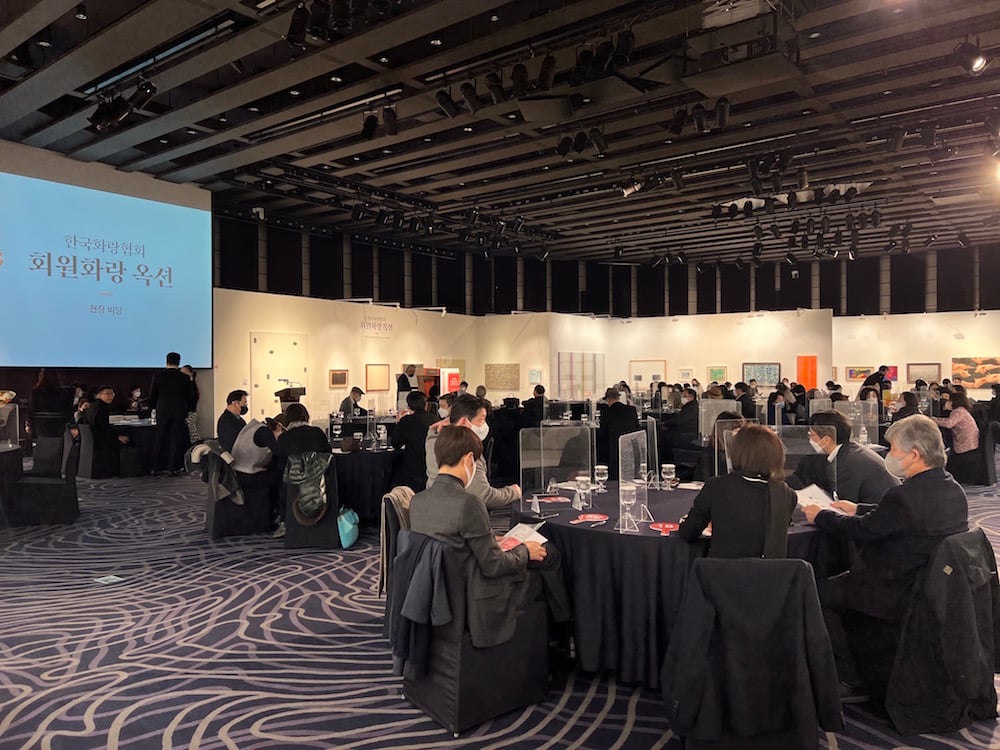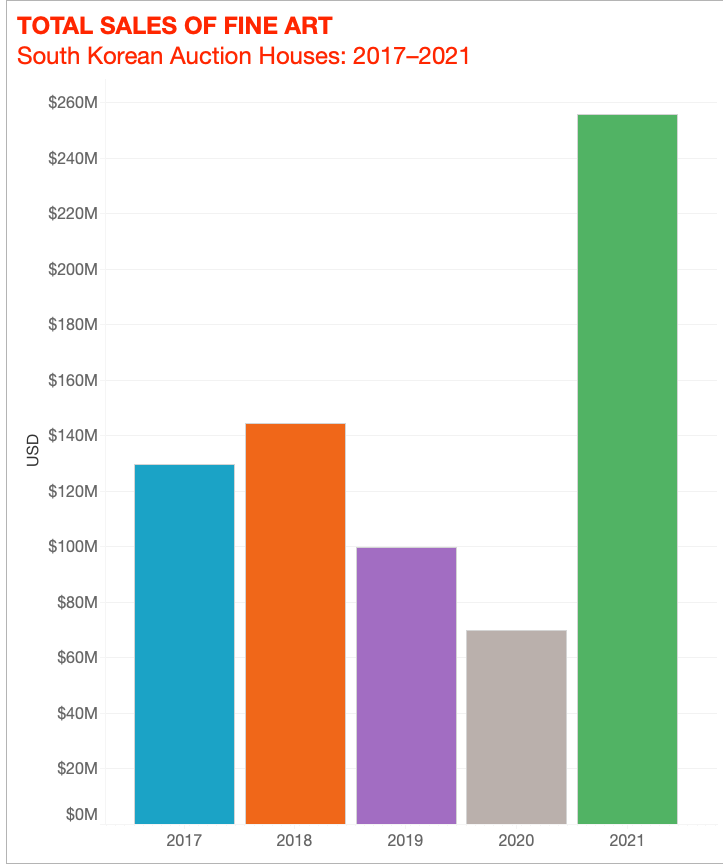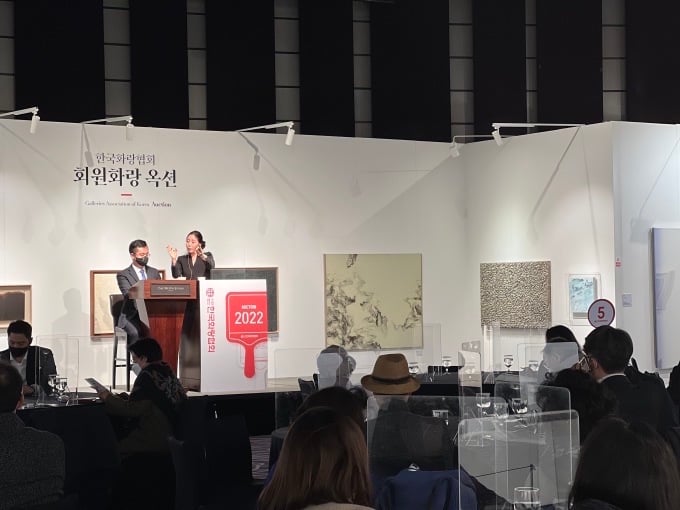Auctions
Korean Galleries and Auction Houses May Finally Be Coming to an Agreement After a Long-Simmering Turf War
South Korean galleries have fought back against the auction houses' aggressive tactics by holding their own closed-door sale.

South Korean galleries have fought back against the auction houses' aggressive tactics by holding their own closed-door sale.

South Korea’s auction houses and galleries fight over market turf might soon be resolved. After accusing the country’s biggest auction houses of allegedly poaching business and encroaching on the primary market, the Galleries Association of Korea recently turned the tables, touting the results of an auction it organized on January 26. And the trade group now says it is in negotiations with the auction houses to limit dealing directly with artists.
The sale, which was closed to the public and press, was “successfully completed with a bid rate of 95 percent, which raised the issue for the balanced coexistence of the primary and secondary markets,” according to a statement from the Association shared with Artnet News.
Roughly 110 member galleries participated in the auction, which was held at the Westin Josun Seoul Grand Ballroom and featured more than 100 artists and 117 works. The association did not release details of the lots, such as artist names or prices achieved, but according to one report, there were a large number of works by Lee Ufan, Kim Tschang-yeul, and Son Sang-ki that attracted considerable attention and demand.
Although the actual sale was limited to member galleries—including who could attend and bid on works—the association said the three-day preview that ran January 24-26 was open to the public. However the association previously said attending the preview required showing individual digital invitations, and that those invitations could only be extended by member galleries.

© 2022 Artnet Price Database and Artnet Analytics.
The association’s claims of a spike in auctions in Korea are supported by data from the Artnet Price Database. It shows a considerable rise in sales at Seoul Auction and K Auction in 2021, totaling around $250 million, up from just $70 million in 2020—a more than three-fold increase.
Following its sale, the galleries association has “started negotiations with two major auction companies,” said the group’s president, Hwang Dalseung. “An agreement based on the contents of the consultation is expected to proceed soon. It will be about reducing the number of auctions and prohibiting direct deals with artists.” Hwang added that negotiations were started with Seoul first, and the association is also willing to consult with K Auction, “but they are still in a passive attitude.”

The Korean Galleries Association auction at the Westin Josun Seoul Grand Ballroom in Seoul on January 26. Image courtesy the Korean Galleries Association.
While the association’s allegations against the auction houses may be understandable, insiders of Seoul’s art world said both the galleries and the auction houses are responsible for the fall out, which will eventually hurt the local art scene, especially the career development of young, emerging artists.
Some Seoul-based art professionals, who spoke on the condition of anonymity, told Artnet News that the spat between galleries and auction houses is a reflection of an overheated market in South Korea. This comes from a surge in new buyers who have little experience in the art world and who tend to buy art from auctions.
While it is not illegal for auction houses to consign directly from artists, noted the insiders, the nature of the auction business and the frequency of the sales, both physical and online, are not conducive for artists’ career development.
At the same time, some found it “odd” for galleries to stage their own auction, especially one that is a closed-door event accessible only to members of the Galleries Association. And the question of whether galleries have themselves offered enough support for artists’ development is also debatable, the insiders noted. Some artists who couldn’t get the kind of support they needed from galleries saw collaborating with auction houses as a career boost, without realizing that it could be damaging to their market in the long-run.